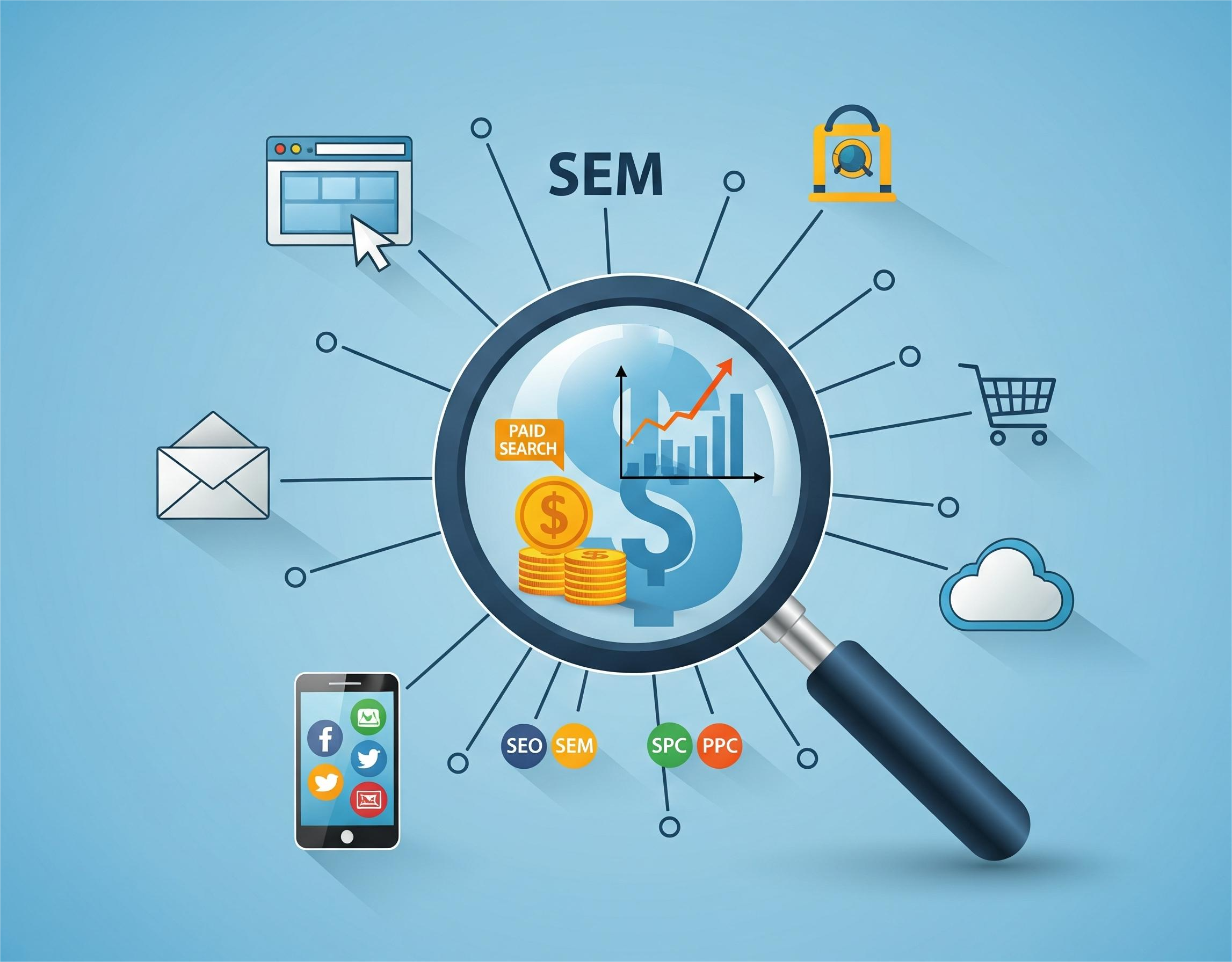
What is SEM in Digital Marketing?
Introduction
In the fast-paced world of digital marketing, achieving visibility in search results has become more competitive than ever. One of the most effective ways to get in front of your target audience quickly is through Search Engine Marketing (SEM). As a paid marketing strategy, SEM enables businesses to display advertisements in search engine result pages (SERPs), helping them attract high-intent users at the moment they’re actively looking for specific products or services.
This blog will explore what SEM is, how it works, why it matters in 2025, and how businesses can make the most of it.
What is SEM?Search Engine Marketing (SEM) is a digital advertising strategy used to promote websites by increasing their visibility in search engine results through paid ads. Unlike Search Engine Optimization (SEO), which focuses on organic rankings, SEM involves placing targeted advertisements on search engines like Google and Bing, usually on a pay-per-click (PPC) basis.
When users search for specific keywords, SEM helps ensure your ad appears at the top or alongside organic search results, driving qualified traffic to your site.
How Does SEM Work?An SEM campaign involves multiple steps designed to deliver the most value from your ad spend:
1. Keyword ResearchIdentify high-performing and relevant search terms that your potential customers are likely to use.
2. Campaign SetupCreate and structure campaigns and ad groups based on themes, services, or product categories.
3. Ad CreationCraft compelling, relevant ad copy that encourages users to click through to your landing page.
4. Bidding StrategySet a budget and bidding approach (manual or automated) to compete for placement in search results.
5. Landing Page OptimizationEnsure your landing page aligns with the ad and offers a clear call to action for higher conversions.
6. Performance TrackingMonitor key metrics like impressions, clicks, click-through rate (CTR), cost-per-click (CPC), and conversions to evaluate effectiveness.
Popular SEM PlatformsSome of the most widely used SEM platforms as of 2025 include:
-
Google Ads – The dominant player in the search advertising space.
-
Microsoft Advertising (Bing Ads) – Offers access to a different audience with generally lower CPC rates.
-
YouTube Ads – Ideal for targeting users through video content.
-
Amazon Sponsored Ads – Powerful for e-commerce businesses promoting products directly within search results.
Although both SEM and SEO aim to increase visibility in search engines, they operate differently:
Feature SEM SEO Cost Paid per click Free (requires time and effort) Visibility Speed Immediate Long-term Placement Top of SERPs Below paid ads Control Over Copy High (you control the ads) Limited (controlled by search engines) Duration Stops when the budget ends Sustains with ongoing optimizationBenefits of SEM in 2025
Search Engine Marketing continues to offer a range of benefits, especially with advanced automation and data targeting capabilities now available:
-
Instant visibility in search results
-
High-quality, intent-driven traffic
-
Full control over messaging and budget
-
Easy-to-measure performance metrics
-
Flexible targeting by location, device, language, and time
-
AI-powered bidding and smart audience segmentation
To stay competitive, it’s crucial to align SEM strategies with current market shifts. Here are some key trends to watch in 2025:
1. Automation and Smart BiddingMachine learning algorithms now optimize bids in real time, helping advertisers get better results with less manual input.
2. Voice Search TargetingWith voice assistants becoming more mainstream, targeting longer, conversational queries is essential.
3. Video Ads in SearchGoogle and Bing are increasingly integrating video into search ads, offering new engagement formats.
4. Privacy-First AdvertisingWith rising concerns about data privacy, advertisers must follow compliant tracking models and rely more on first-party data.
5. Audience Targeting EnhancementsAdvanced segmentation tools allow advertisers to target users based on behavior, interests, and previous interactions.
Common SEM Mistakes to AvoidWhile SEM offers strong ROI potential, there are common mistakes that can hurt campaign performance:
-
Choosing overly broad or irrelevant keywords
-
Neglecting negative keyword filters
-
Sending traffic to poorly optimized landing pages
-
Ignoring mobile-friendly ad and landing page designs
-
Failing to test different versions of ad copy
Search Engine Marketing is a highly effective way to gain immediate visibility, connect with ready-to-buy users, and drive measurable business outcomes. As the digital landscape becomes more competitive in 2025, a well-structured SEM strategy can be a game-changer for businesses across industries.
By combining strong keyword targeting, compelling ad copy, smart bidding, and continuous performance analysis, SEM empowers brands to reach the right audience at the right time—and with the right message.






